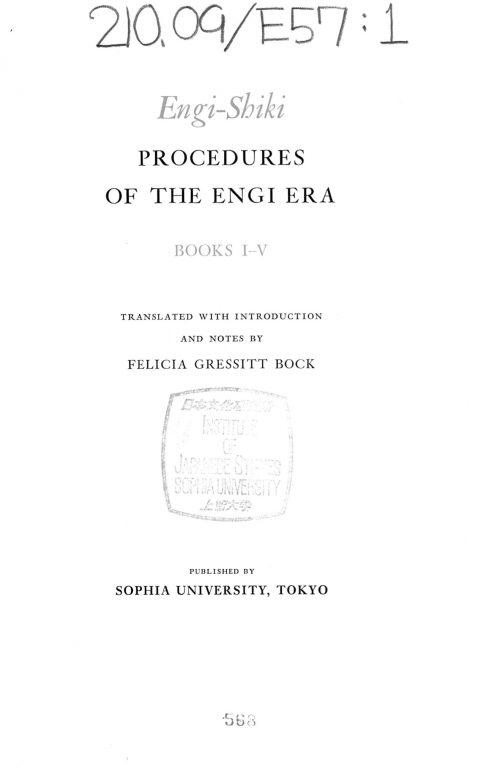Engi-shiki: Procedures of the Engi Era, Books I-VTranslated by Felicia Gressitt Bock
Monographs (1970) pp. 1–216
The Engi-shiki, or Procedures of the Engi era (A.D. 901-22), are a great body of regulations designed to supplement the administrative codes which were drawn up in the early eighth century. Because of their wide scope and the minute details included, they are an invaluable source of information about Japan in the Nara and early Heian periods–eighth, ninth and early tenth centuries.
The compiling of these procedures during the Engi era (and the Enchō era which followed it) was brought about by the fact that the laws codified at the beginning of the Nara period were of such a concise nature that amplification and clarifications as to how to implement those laws were absolutely necessary. At first glance the Engi-shiki appear to be a huge aggregate of lists, enumerations, specifications, registers and statistics. Such they are, but in relation to the department of government under which these fall, they provide many essential regulations for carrying out the day-to-day details of civil and religious administration and requirements of office….
To appreciate the Engi-shiki as a text we must take into account the dual nature of its background: namely, the history of the development of that system of law of which this is an essential part, and secondly, the growth of the official kami cult. These two streams converge in the compilation of procedures (shiki) over a span of nearly two centuries, culminating in the first ten books of religious procedures. the present study presents five of these books in translation.
1970. 216 pages.
Hardback ¥2,000/$20.00/€20.00.
